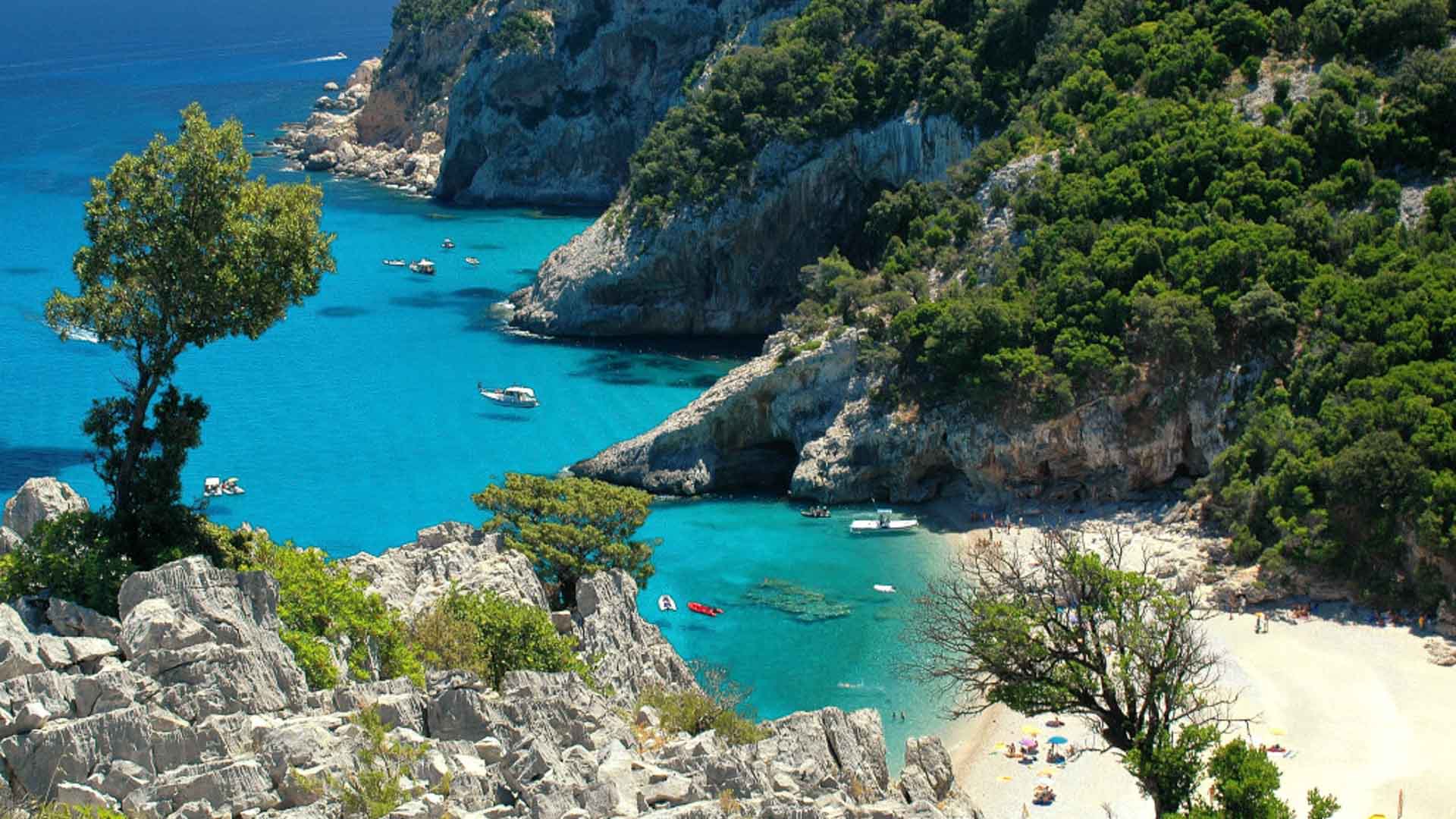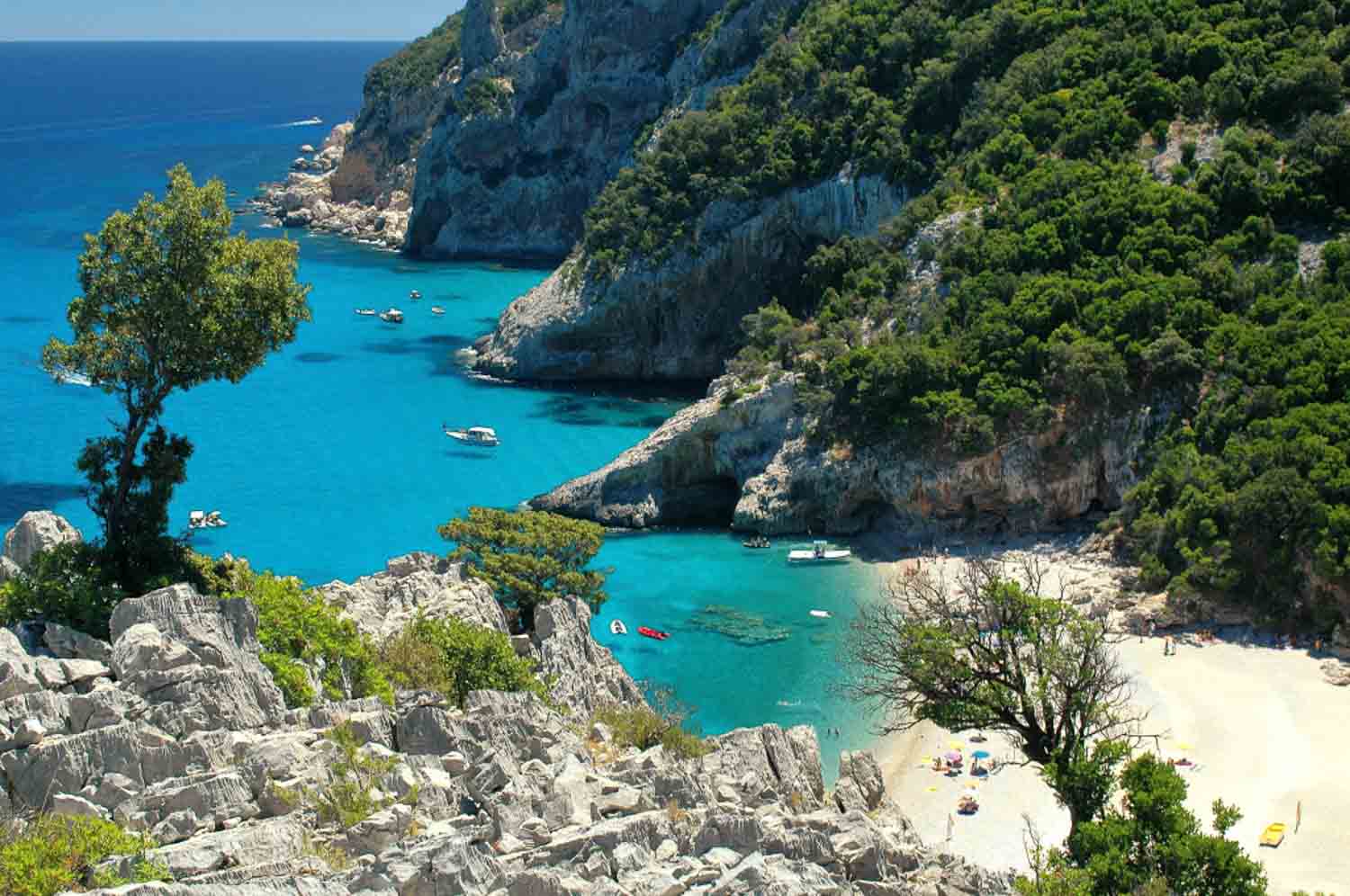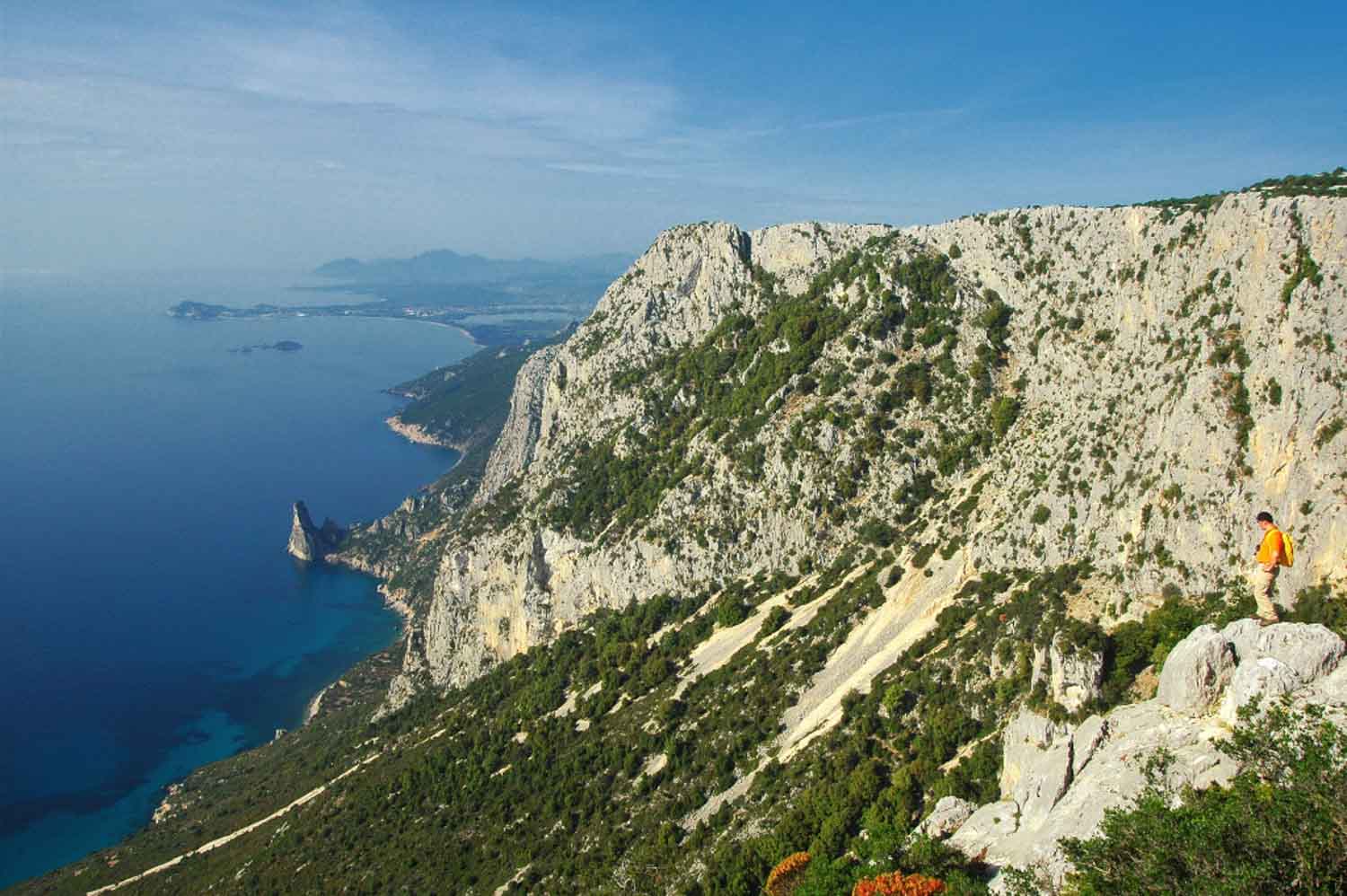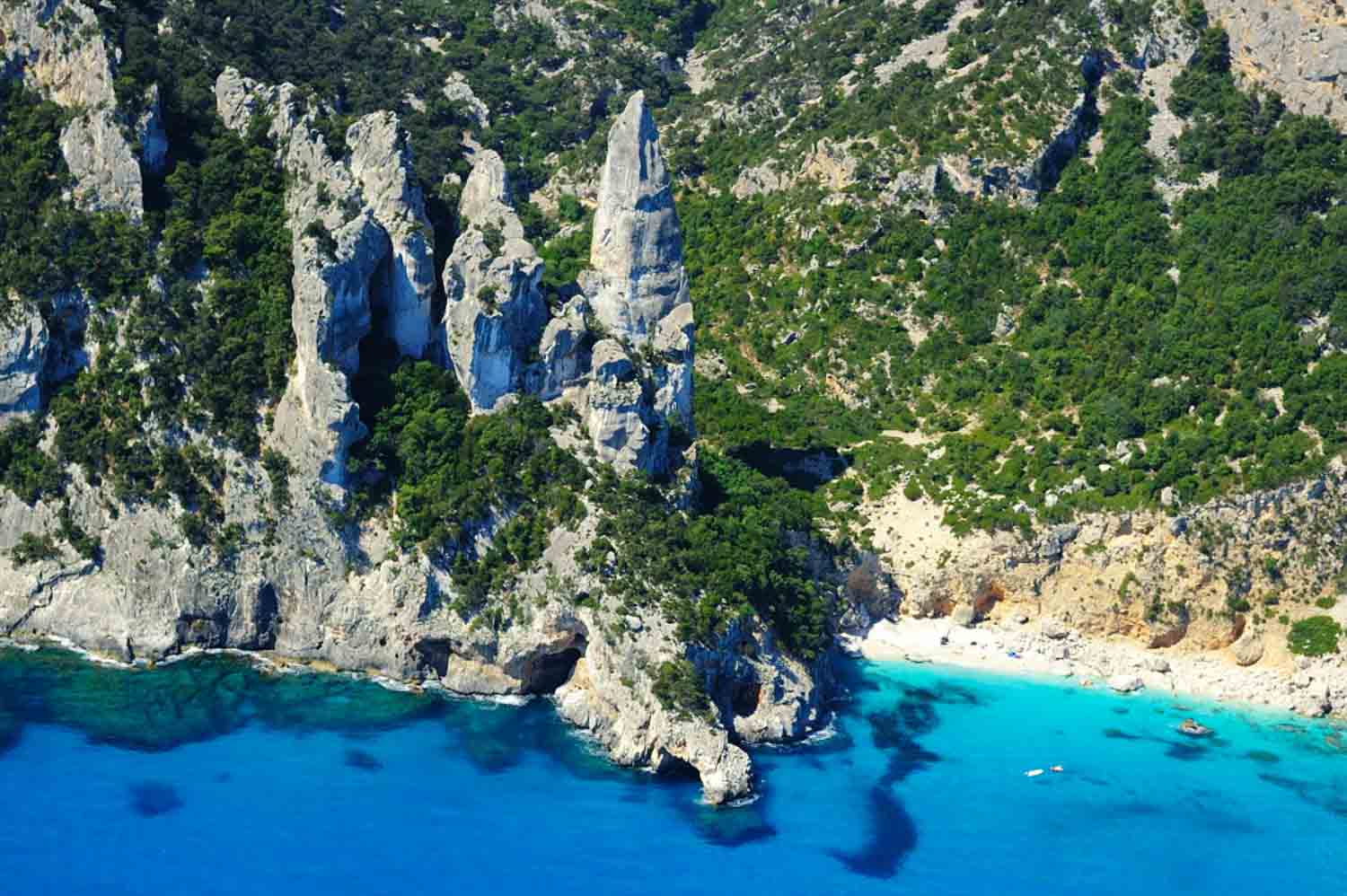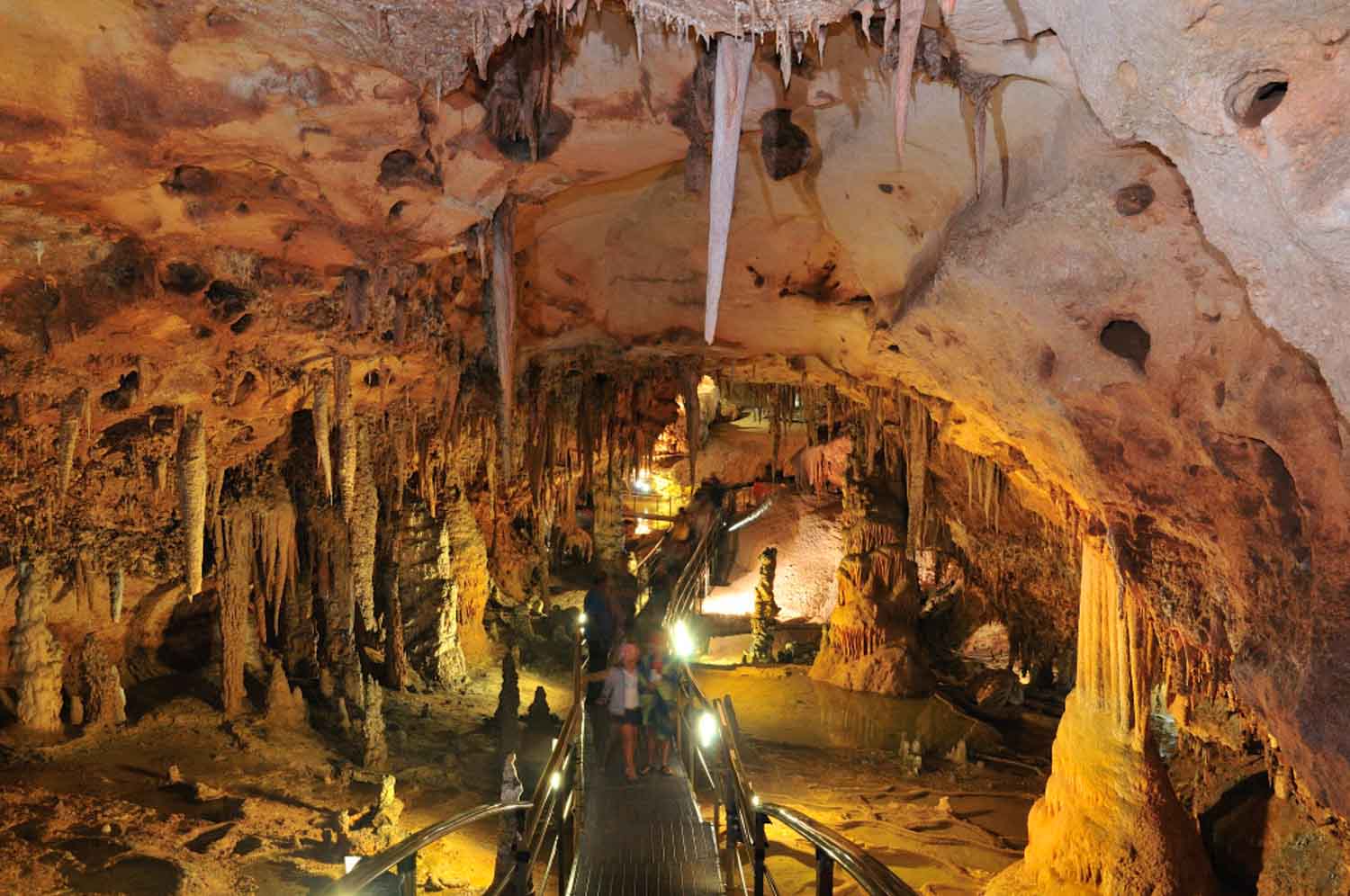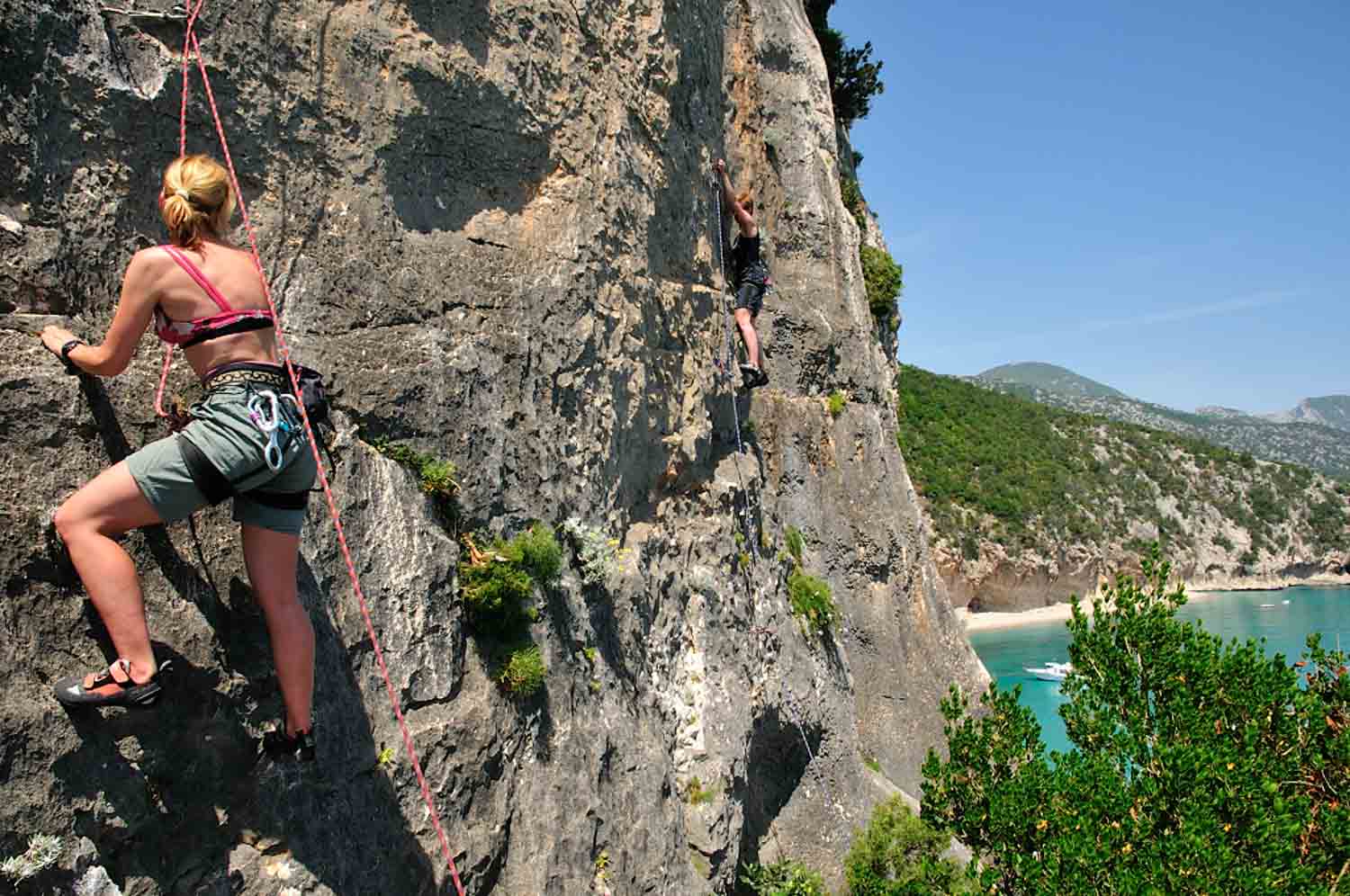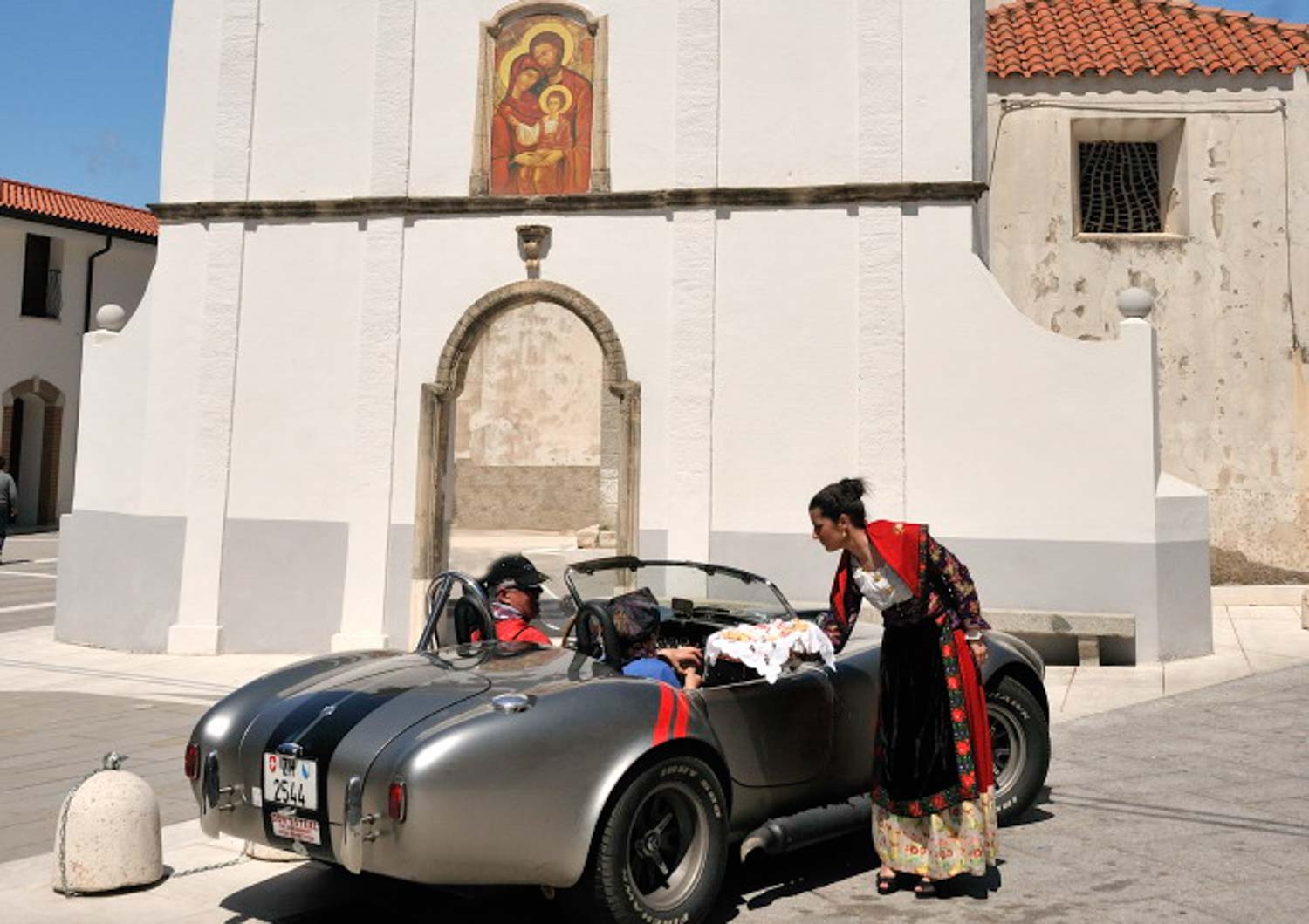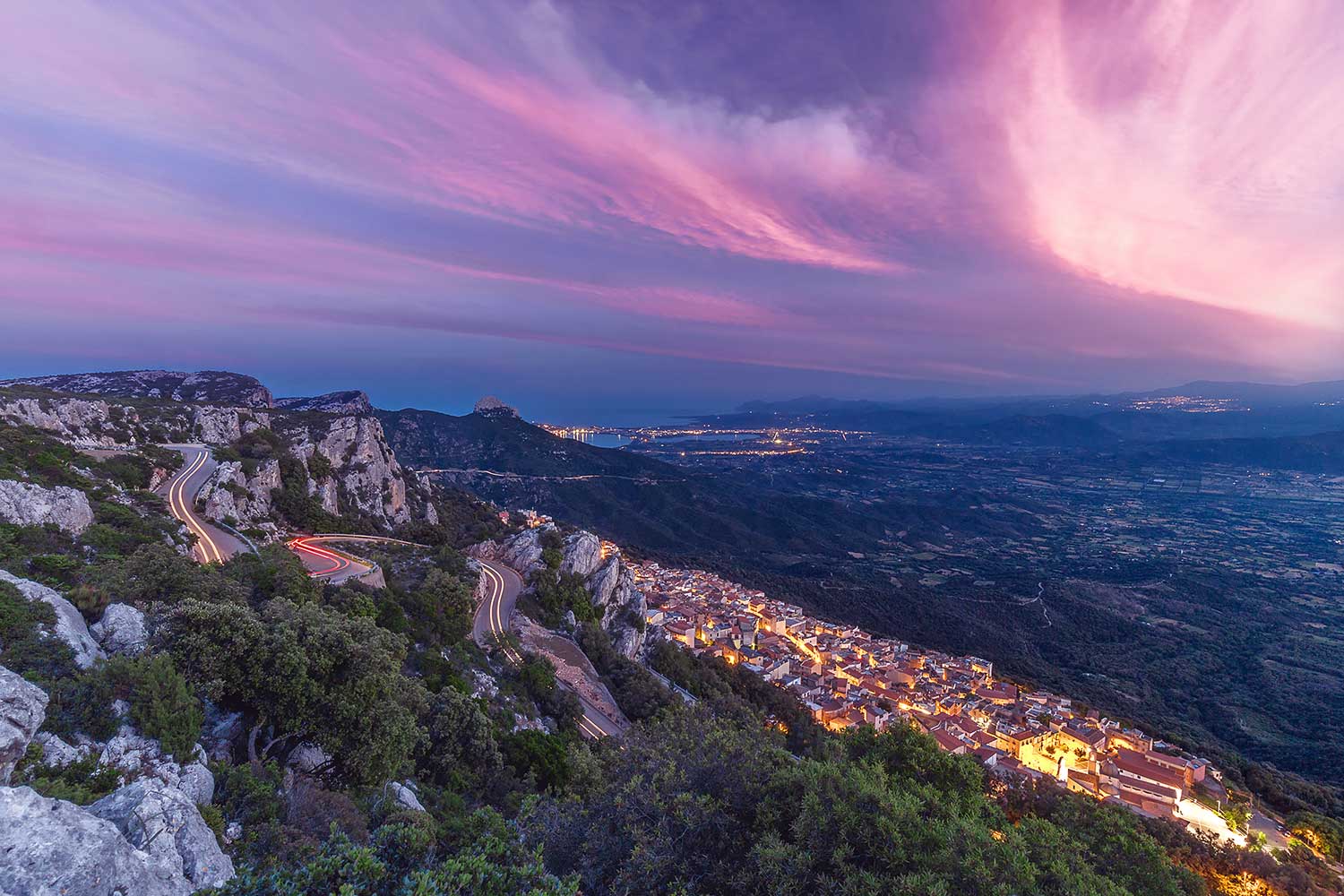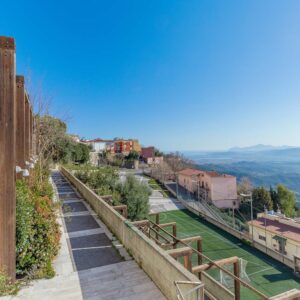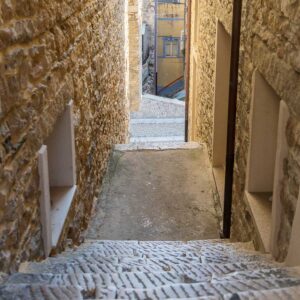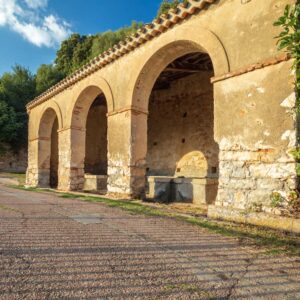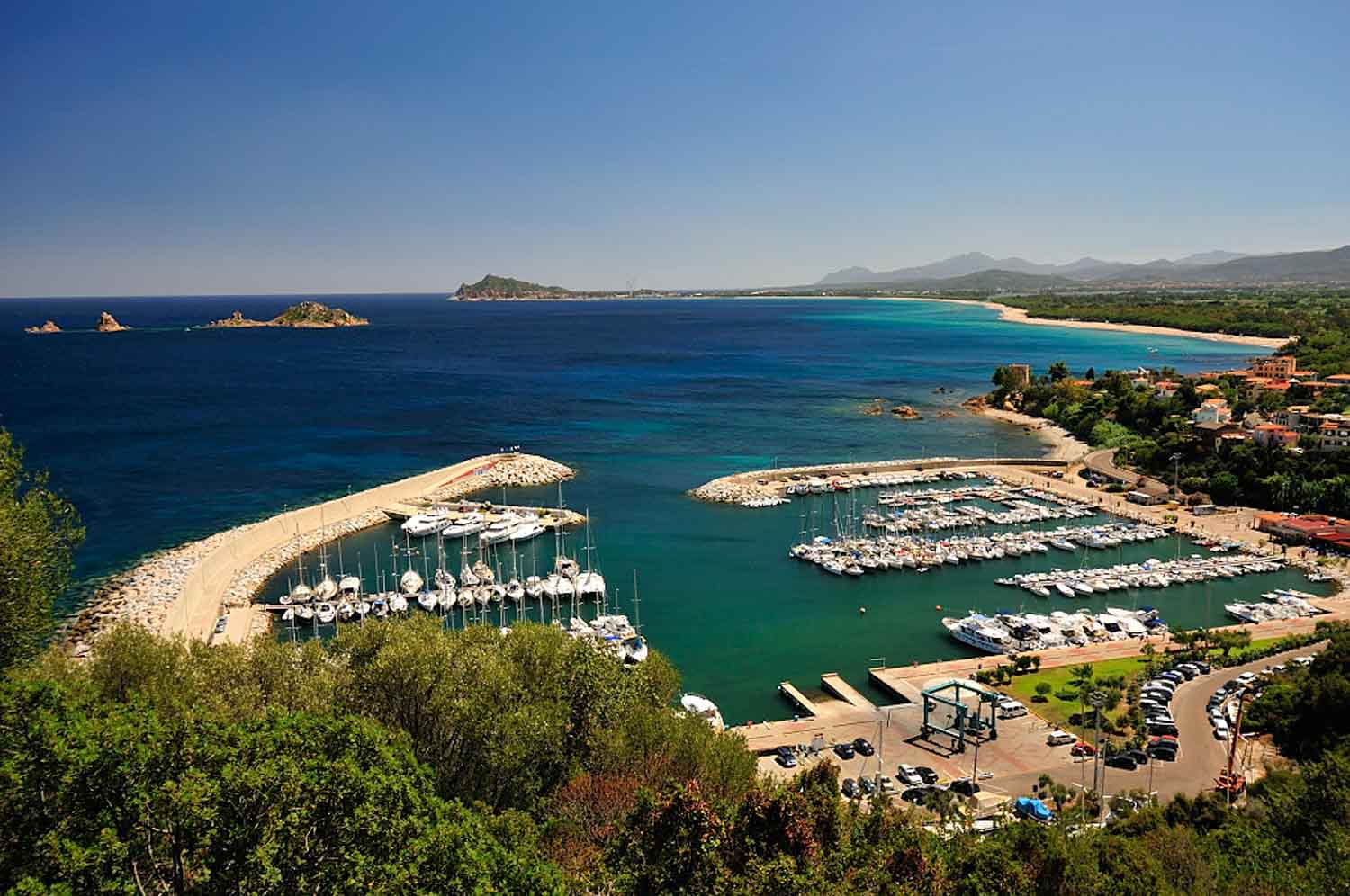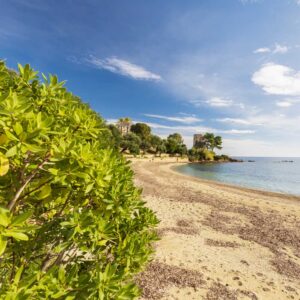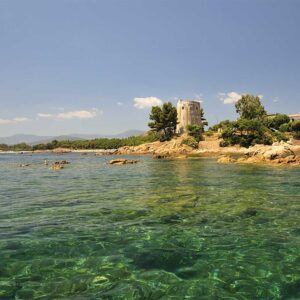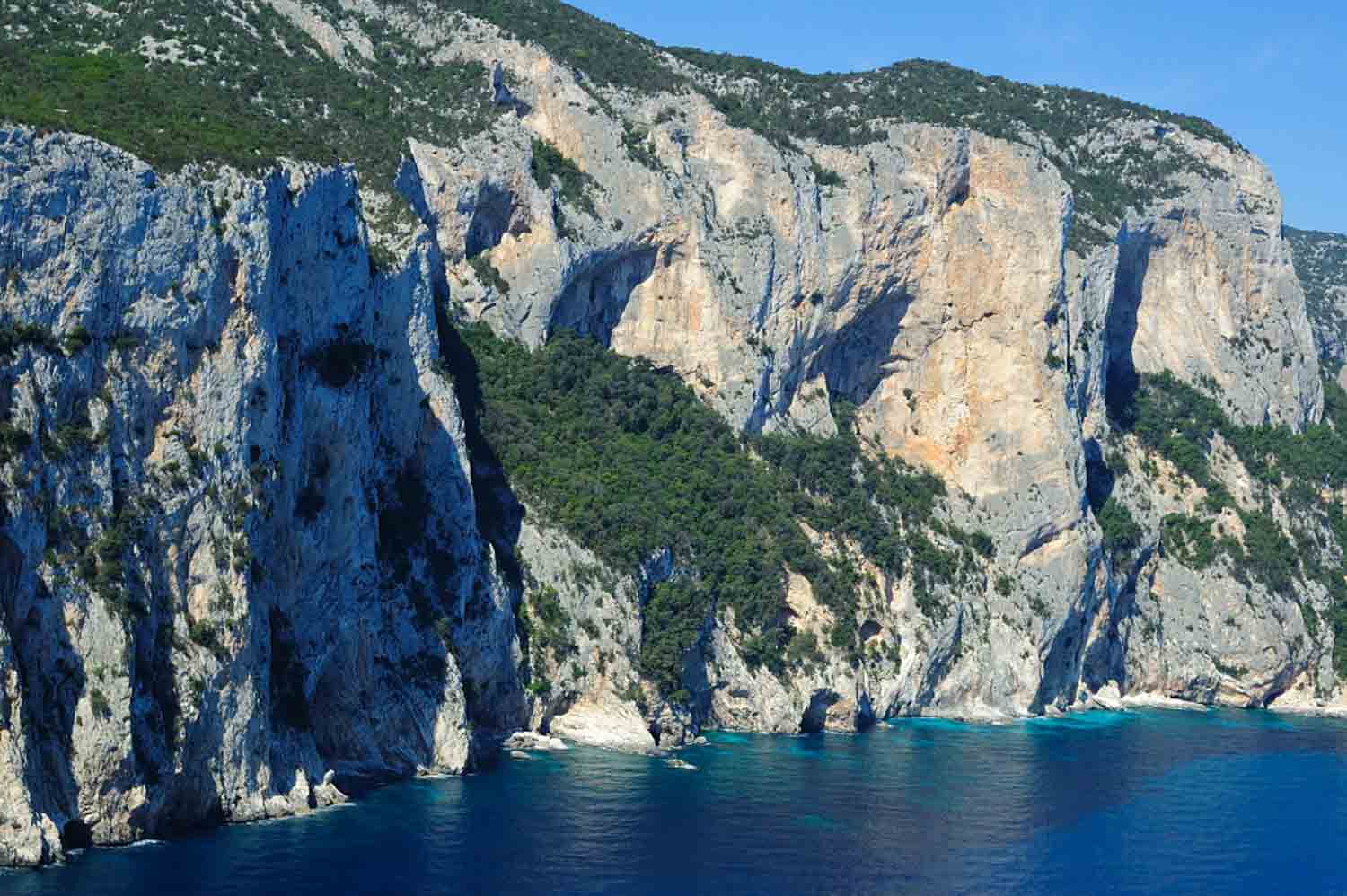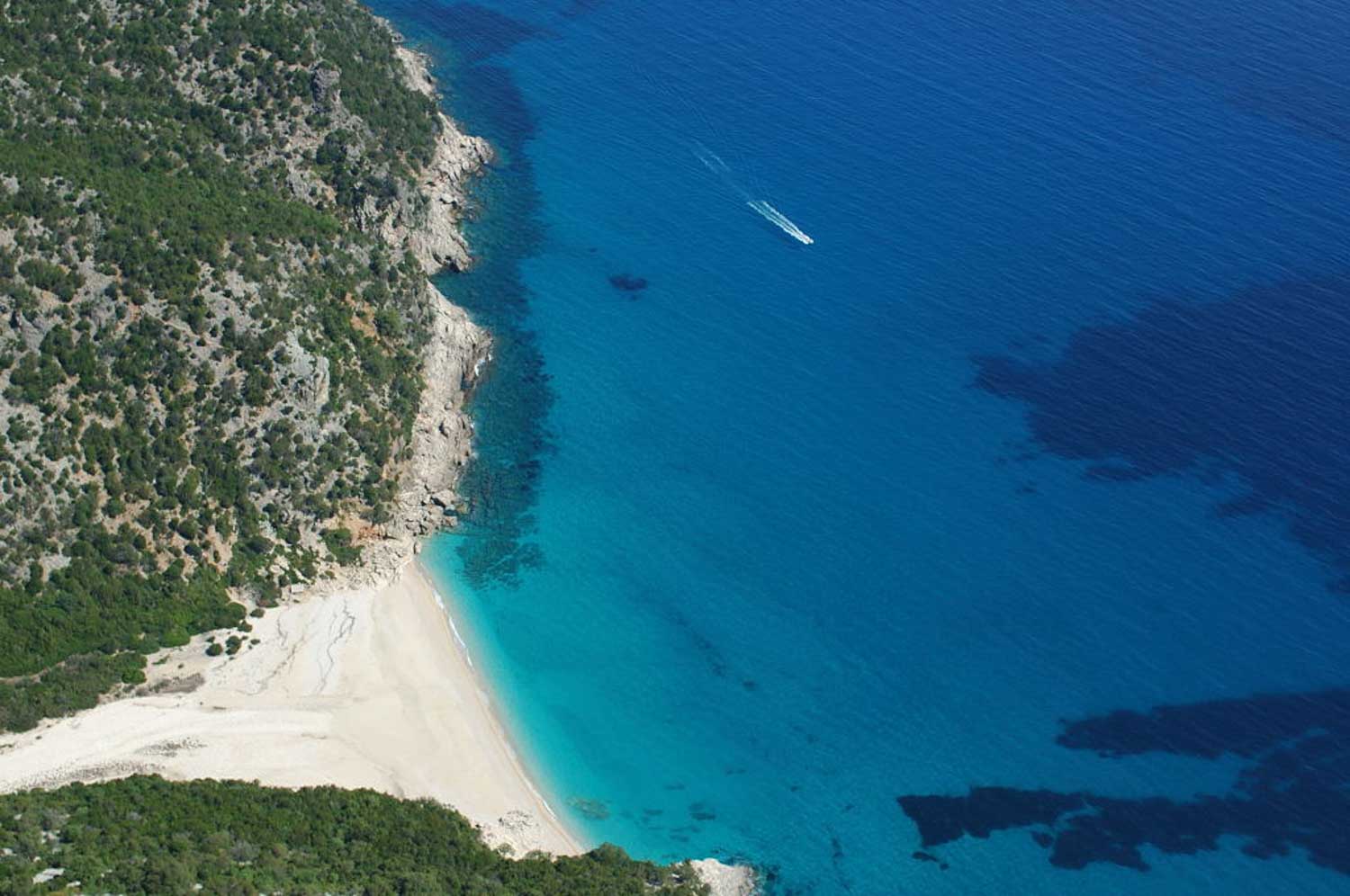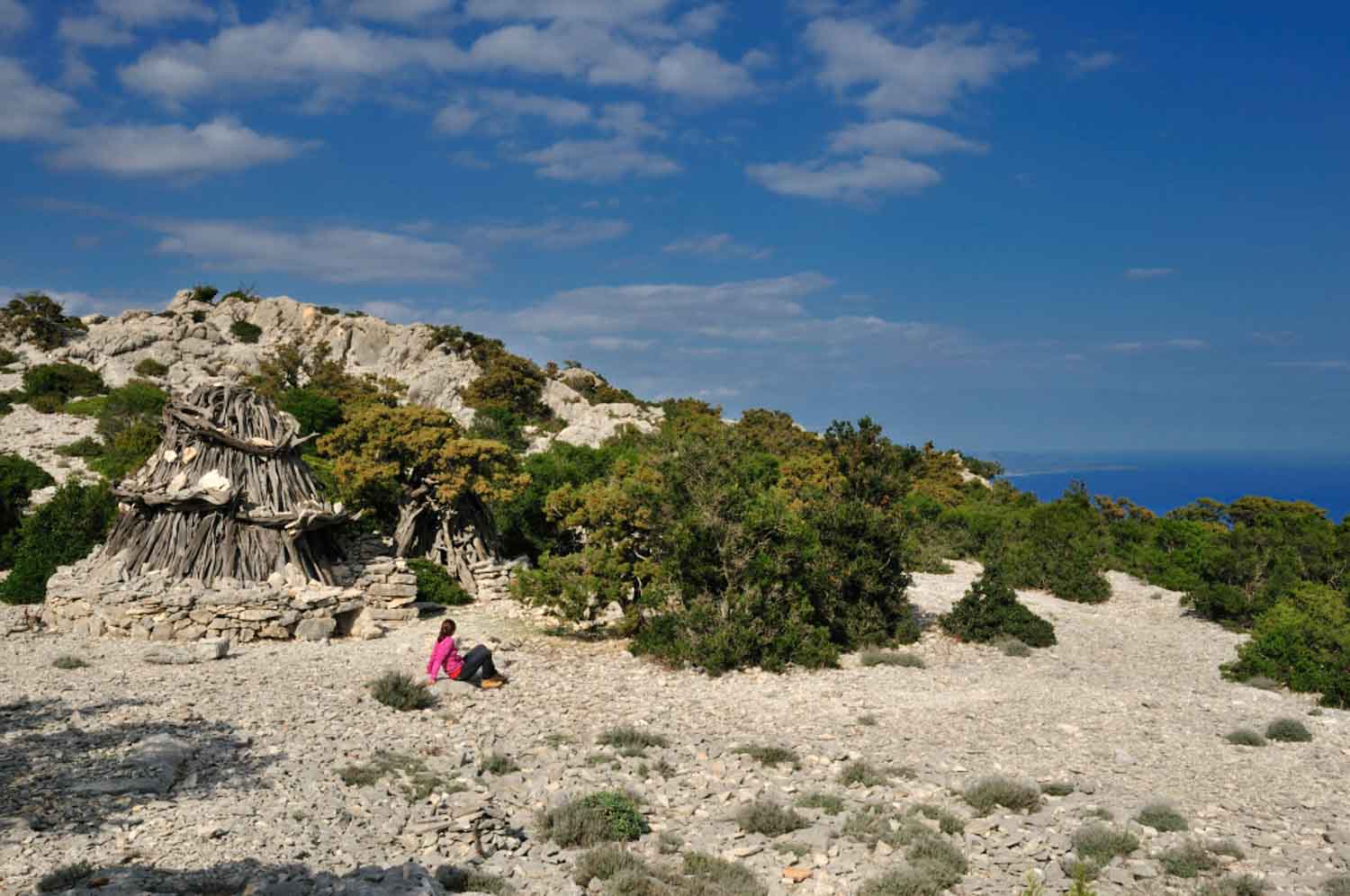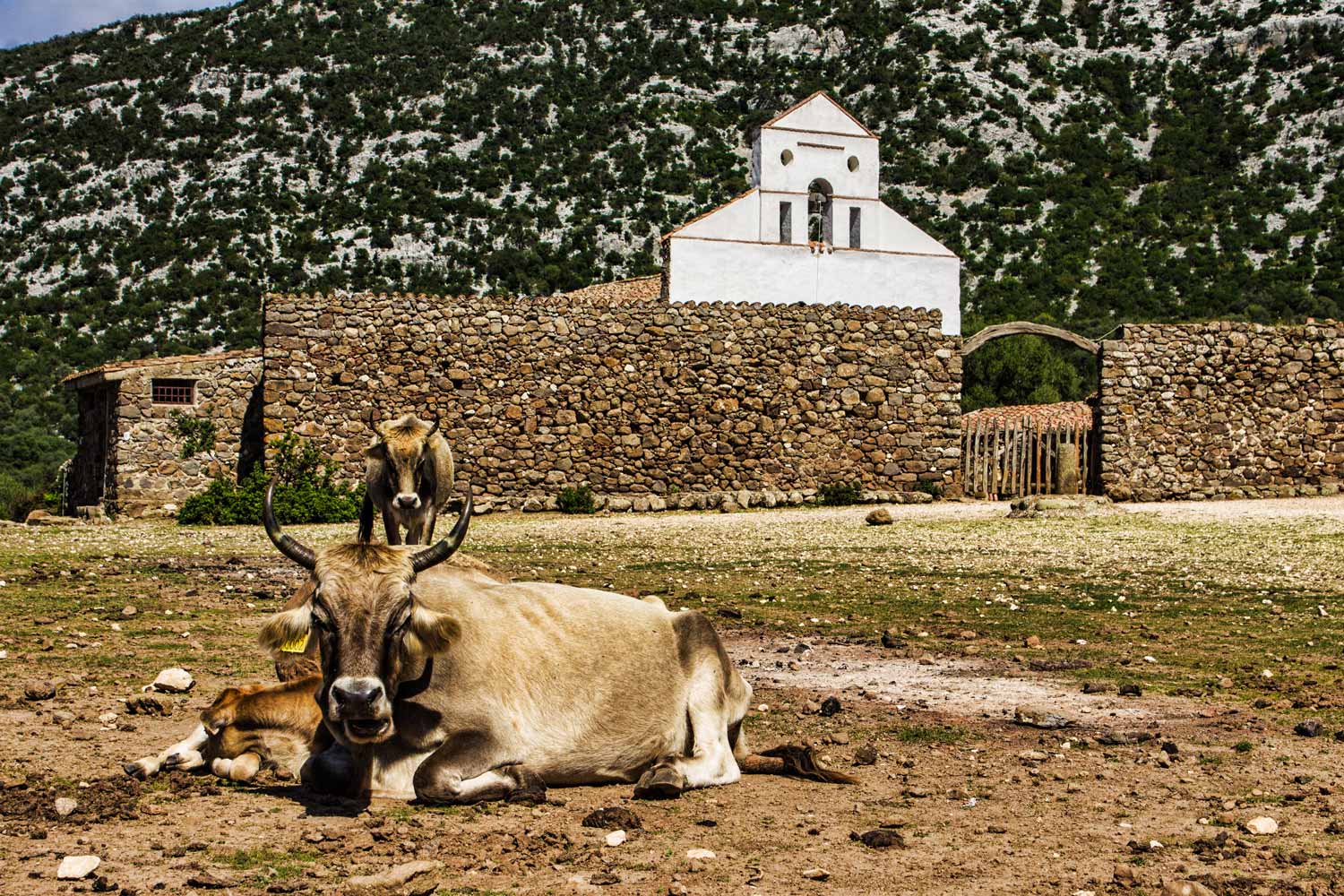EXPLORE
The coast of Ogliastra, the charm of an oasis between the sea and the mountain
22000 HECTARS
Supramonte of Baunei,
a mountain range of highlands
1950 YEAR
Santa Maria Navarrese
was founded
10 KM
From stunning
crystal clear waters
Ogliastra, is an historical and geographical region in the Central Eastern part of Sardinia with its eastern borders on the Tyrrhenian sea.
It is home to the two lakes Lago Flumendosa and lago alto Flumendosa and to part of the Gennargentu mountain range with the highest mountain Peak in Sardinia, Punta La Marmora (1834 mt) set in the territory of Arzana. At the northeast we find the Supramonte region that lies in the territories of Baunei and Urzulei and at the west the highlands in Seui with the Mountain Tonneri and the wellk-nown Tacchi in Ulassai.
The coast of Ogliastra is peppered with many stunning oases nestled between the sea and the mountain and it is one of the richest and most fascinating marine environments of the Mediterranean. In the north we find the beautiful coves of Cala Luna, Cala Sisine, Cala Mariolu and Cala Goloritzé; and heading South we find the beaches of Tancau, Orrì, Cea, Marina di Barisardo, Cardedu, Coccorrocci and the Gulf of Sarrala.
In Ogliastra there are also many archaeological and historic sites such as Nuraghi, Domus de Janas (houses of the Janas), Sacred wells, Tombe dei Giganti (giants’ tombs) and Menhir.
It is home to the two lakes Lago Flumendosa and lago alto Flumendosa and to part of the Gennargentu mountain range with the highest mountain Peak in Sardinia, Punta La Marmora (1834 mt) set in the territory of Arzana. At the northeast we find the Supramonte region that lies in the territories of Baunei and Urzulei and at the west the highlands in Seui with the Mountain Tonneri and the wellk-nown Tacchi in Ulassai.
The coast of Ogliastra is peppered with many stunning oases nestled between the sea and the mountain and it is one of the richest and most fascinating marine environments of the Mediterranean. In the north we find the beautiful coves of Cala Luna, Cala Sisine, Cala Mariolu and Cala Goloritzé; and heading South we find the beaches of Tancau, Orrì, Cea, Marina di Barisardo, Cardedu, Coccorrocci and the Gulf of Sarrala.
In Ogliastra there are also many archaeological and historic sites such as Nuraghi, Domus de Janas (houses of the Janas), Sacred wells, Tombe dei Giganti (giants’ tombs) and Menhir.
CULTURE, HISTORY AND TRADITION
““…A big copper moon rises from the sea and the world seems made of gold and pearl. The accordion fills the courtyard with moans and shouts; at the red light of the buckthorn fire the dark figure of the musician and the purple faces of the women and children dancing the ballo sardo stand out against the grey wall. Their shadows moving on the trodden grass and dancing on the church’s walls; the golden buttons, the silver braid of the costumes, the keys of the accordion all shine, everything else is lost in the pearl of the dim moonlight…”
This is how Grazia Deledda described her beloved Sardinia in the novel Canne al Vento (Reeds in the wind).
The essence of Sardinia is in music, starry nights, crystal-clear waters, the steps of Sardinian dances, culinary traditions and in the hospitality of its people.
The essence of Sardinia is in music, starry nights, crystal-clear waters, the steps of Sardinian dances, culinary traditions and in the hospitality of its people.
In Ogliastra in summertime there are several traditional folk festivals during which you can get in touch with our ancient traditions and unforgotten past.
In Santa Maria Navarrese on August 15 we celebrate the Feast of the Assumption of Mary. On this occasion the population gathers in the town’s square, around the old church and under the majestic millenary wild olive trees, to watch the parade of participants, some on horseback, all wearing traditional costumes, who accompany the religious procession along the streets of the town and to the church.
The essence of Sardinia is in music, starry nights, crystal-clear waters, the steps of Sardinian dances, culinary traditions and in the hospitality of its people.
The essence of Sardinia is in music, starry nights, crystal-clear waters, the steps of Sardinian dances, culinary traditions and in the hospitality of its people.
In Ogliastra in summertime there are several traditional folk festivals during which you can get in touch with our ancient traditions and unforgotten past.
In Santa Maria Navarrese on August 15 we celebrate the Feast of the Assumption of Mary. On this occasion the population gathers in the town’s square, around the old church and under the majestic millenary wild olive trees, to watch the parade of participants, some on horseback, all wearing traditional costumes, who accompany the religious procession along the streets of the town and to the church.
BAUNEI
Just 10 km from the mountain lies Baunei, the perfect place for those who dream. You can sunbathe in the renowned Cale, the beautiful coves, hike in the outstanding beauty of our mountains, just enjoy a stroll along the sea shore or experience the dark starry night sky from a dramatic sheer sea cliff; it is the ideal place for anyone who knows that Sardinia is known for its ancient wisdom and traditions as well as its crystal-clear waters and stunning beaches.
SANTA MARIA NAVARRESE
Santa Maria Navarrese, is a seaside town, a hamlet of Baunei, nestled like a shiny pearl in the natural amphitheatre called Ogliastra. The town was founded in the 1950s and it grew around the small church overlooking the sea and surrounded by centenary wild olive trees. The church represents the beating heart of the town and it is the symbol of its birth; it was built by the Princess of Navarra, around 1000 CE, to honour the Virgin Mary for saving her from a terrible shipwreck during which her boat sunk while she made it alive to the quiet shores of Santa Maria Navarrese.
The town is located only 10 km from the mountains. It is the perfect place for those who dreams. You can sunbathe in the renowned Cale, the beautiful coves made of white pebbles: Cala Goloritze, Cala Luna, cala Mariolu to name a few; hike in the outstanding beauty of Golgo's plateau and in the mountains, just enjoy a stroll along the sea shore or experience the dark starry night sky from the dramatic sheer sea cliff in Punta Giradili or Pedralonga; it is the ideal place for anyone who knows that Sardinia is known for its ancient wisdom and traditions as well as its crystal-clear waters and stunning beaches.
The town is located only 10 km from the mountains. It is the perfect place for those who dreams. You can sunbathe in the renowned Cale, the beautiful coves made of white pebbles: Cala Goloritze, Cala Luna, cala Mariolu to name a few; hike in the outstanding beauty of Golgo's plateau and in the mountains, just enjoy a stroll along the sea shore or experience the dark starry night sky from the dramatic sheer sea cliff in Punta Giradili or Pedralonga; it is the ideal place for anyone who knows that Sardinia is known for its ancient wisdom and traditions as well as its crystal-clear waters and stunning beaches.
LE CALE
The land of Baunei runs along the Central East side of Sardinia. At the northern end it borders with Cala Luna. Going south we find the magnificent coves of Cala Sisine, Cala Mariolu, Cala Goloritzè, Cala Biriala, the impressive cave Grotta del Fico, the inlet of Portu Quau, Capo Montesanto and the spectacular Pinnacle of Pedra Longa. You can visit the coast by taking a boat tour departing from the Marina in Santa Maria Navarrese or by taking extraordinary hikes alone or with a local guide.
Heading south we find the beach of Santa Maria Navarrese; It is near the town centre and easy to reach with a short walk. The beach is set next to a pinewood grove and near the small church, which dates back to 1000 CE; at the southern end of the beach are the “Biritzi” rocks and the Spanish Tower “Torre Saracena” is at the northern end.
Heading south we find the beach of Santa Maria Navarrese; It is near the town centre and easy to reach with a short walk. The beach is set next to a pinewood grove and near the small church, which dates back to 1000 CE; at the southern end of the beach are the “Biritzi” rocks and the Spanish Tower “Torre Saracena” is at the northern end.
SUPRAMONTE
Set in the eastern edge of the highlands, Baunei’s Supramonte is a mountain range defined by plateaus. It spans for about 22.000 hectares with a scenic landscape that is rich in barren cliffs and deep canyons. The best way to enjoy the Supramonte is hiking or participating in one of the many guided tours- hiking, mountain biking, horse riding or more comfortably, in an off road vehicle.
In Golgo’s plateau we find a symbol of our land- the chasm “Su Sterru”. At 275 m deep it is one of the deepest chasms in Europe. According to the legend there once was a terrible battle between the monstrous snake that owned the plateau and Saint Peter who wanted to free Baunei from the menace of the terrible monster. Saint Peter took the snake by its tail and hit it so hard on the ground that he created “Su Sterru”. To thank Saint Peter for freeing them of the terrible creature the population built a church on the plateau in his name.
In Golgo’s plateau we find a symbol of our land- the chasm “Su Sterru”. At 275 m deep it is one of the deepest chasms in Europe. According to the legend there once was a terrible battle between the monstrous snake that owned the plateau and Saint Peter who wanted to free Baunei from the menace of the terrible monster. Saint Peter took the snake by its tail and hit it so hard on the ground that he created “Su Sterru”. To thank Saint Peter for freeing them of the terrible creature the population built a church on the plateau in his name.

